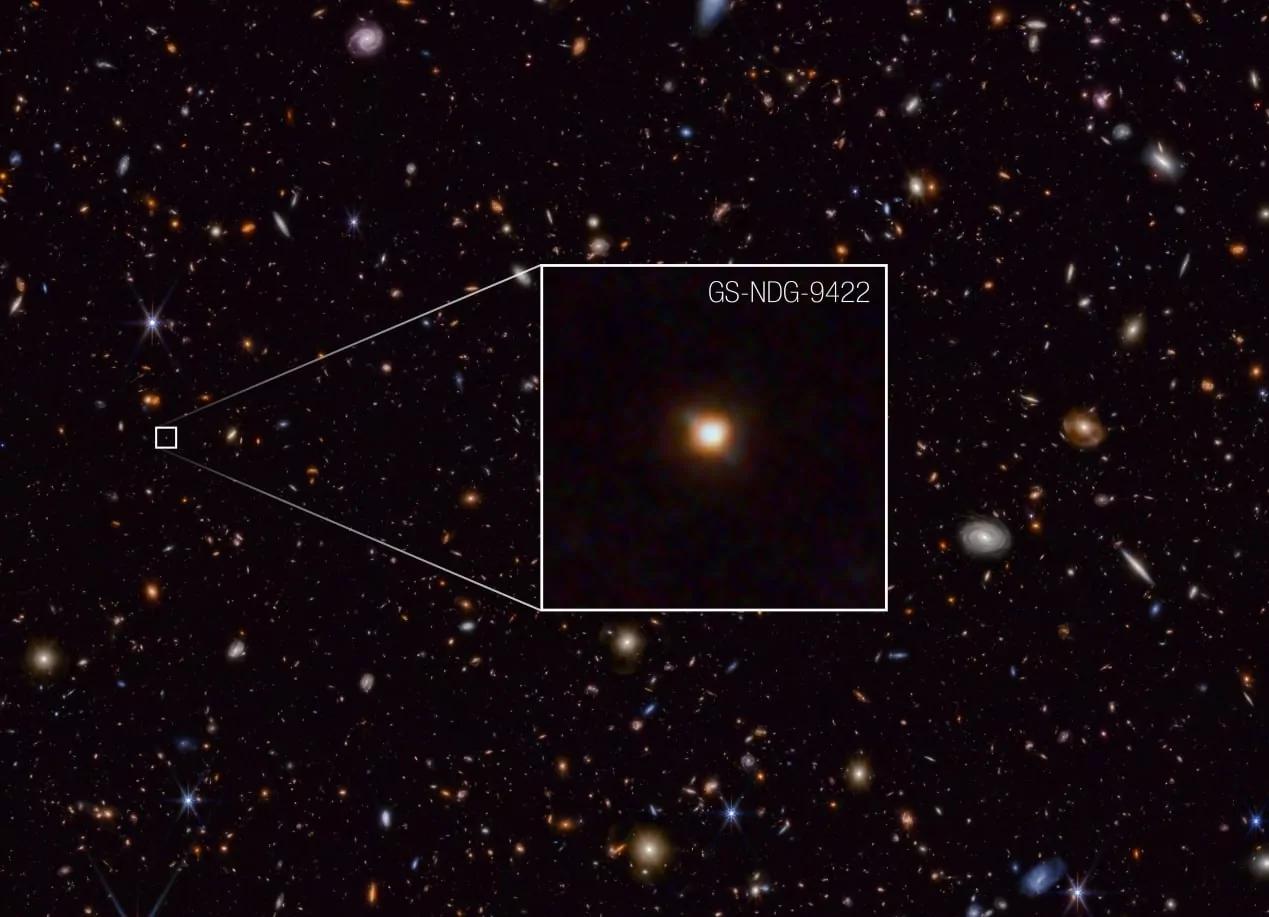The James Webb Space Telescope has discovered a unique galaxy where the gas inside shines brighter than its stars.
The galaxy, named GS-NDG-9422, is seen as it appeared just 1 billion years after the Big Bang. What makes it remarkable is that the light captured in the image is not coming from its stars but from the galaxy’s hot gas. Astronomers believe that the stars in this galaxy are so intensely hot—reaching temperatures over 80,000 degrees Celsius—that they heat the surrounding gas, causing it to glow even brighter than the stars themselves.
This discovery might point to a previously unseen phase in galactic evolution. What’s also intriguing about GS-NDG-9422 is its unusual chemical composition for a galaxy of such age. Analysis has revealed traces of heavier elements like oxygen, carbon, and iron, which are typically synthesized in second-generation stars. These elements suggest that the galaxy may have undergone some early stellar processes leading to the enrichment of its gas.
Researchers are now looking for more galaxies like GS-NDG-9422 to gain better insight into what was happening during the first billion years of the universe’s existence. Understanding these early stages of galactic development could help unravel key aspects of cosmic evolution.
